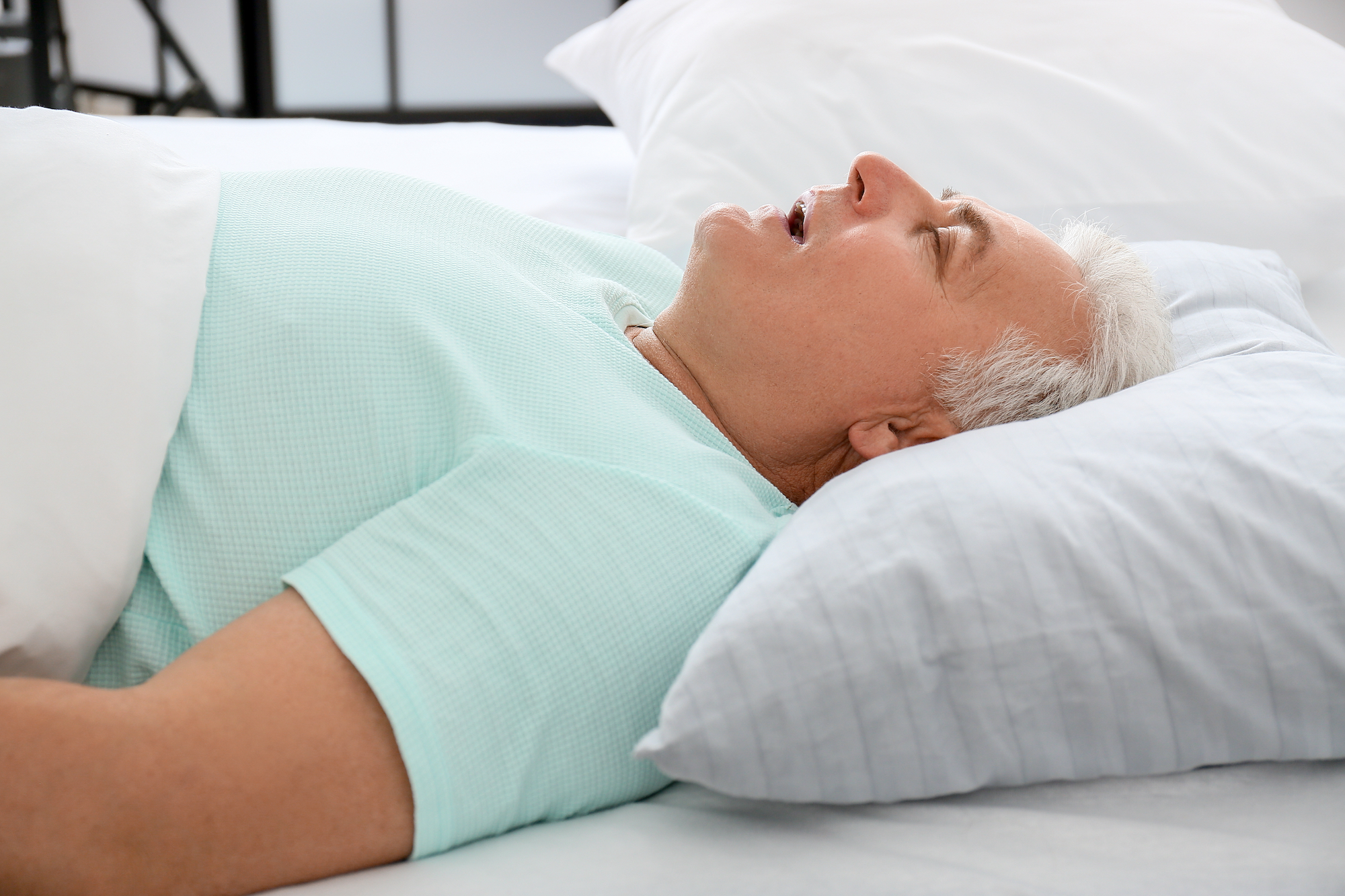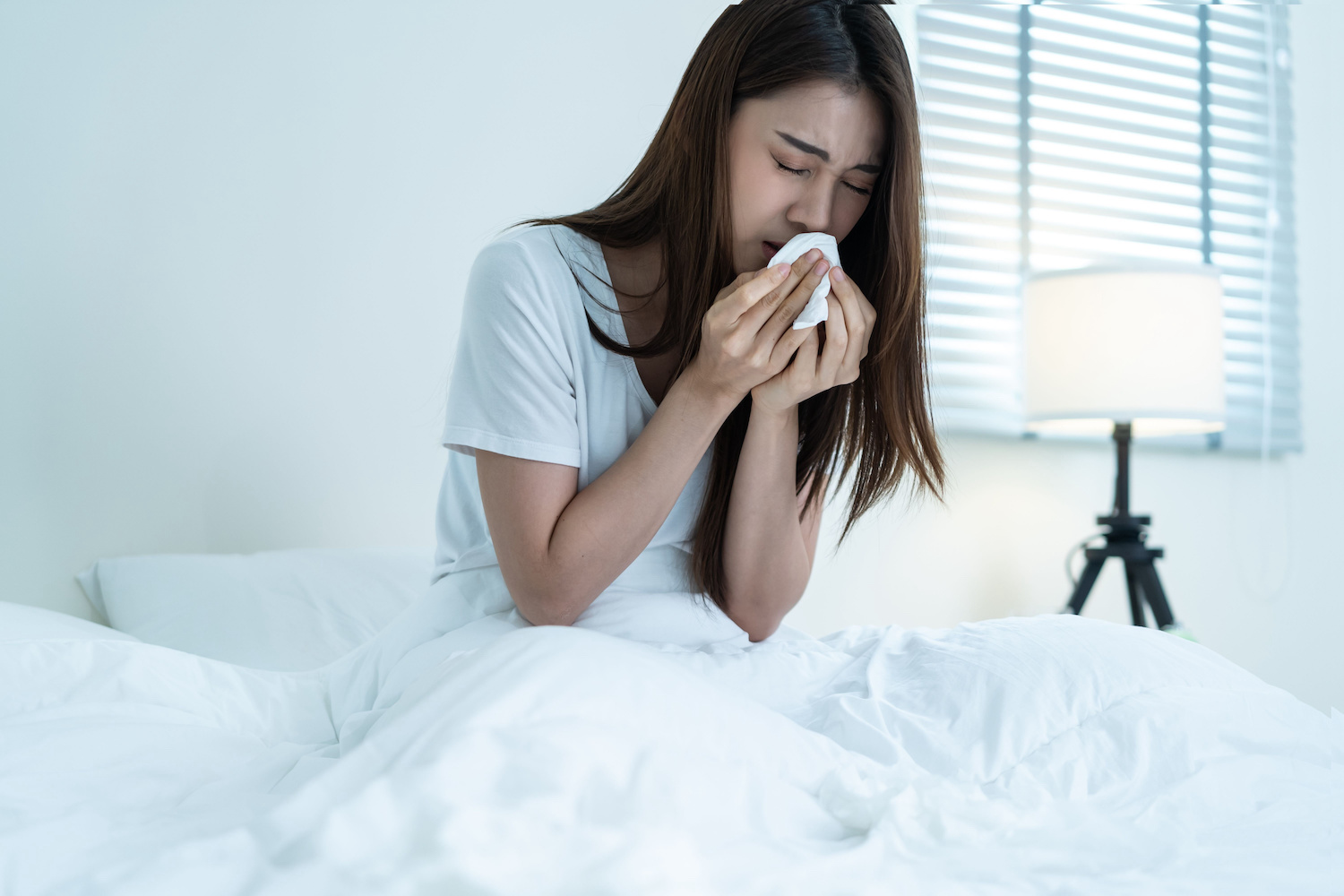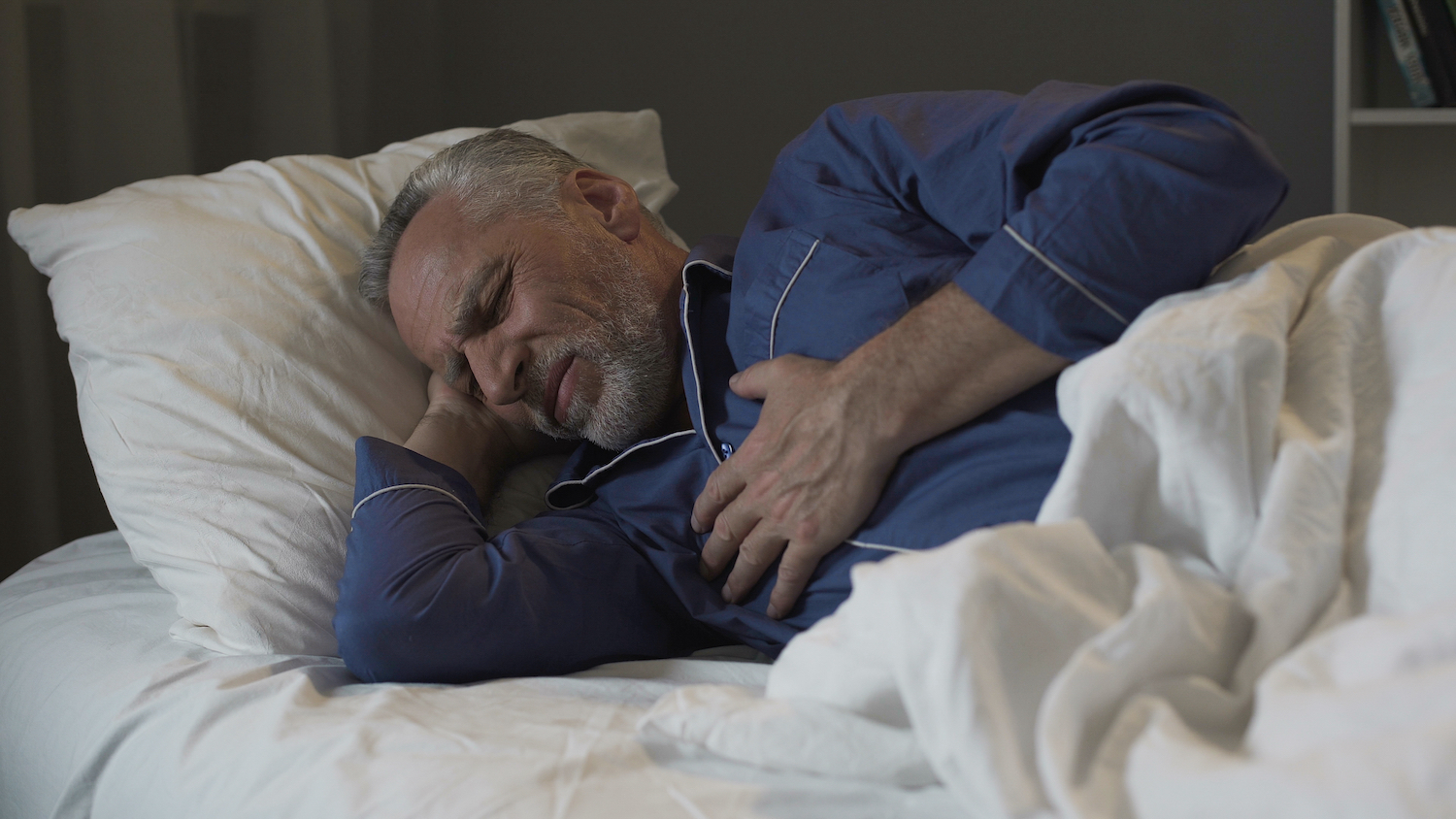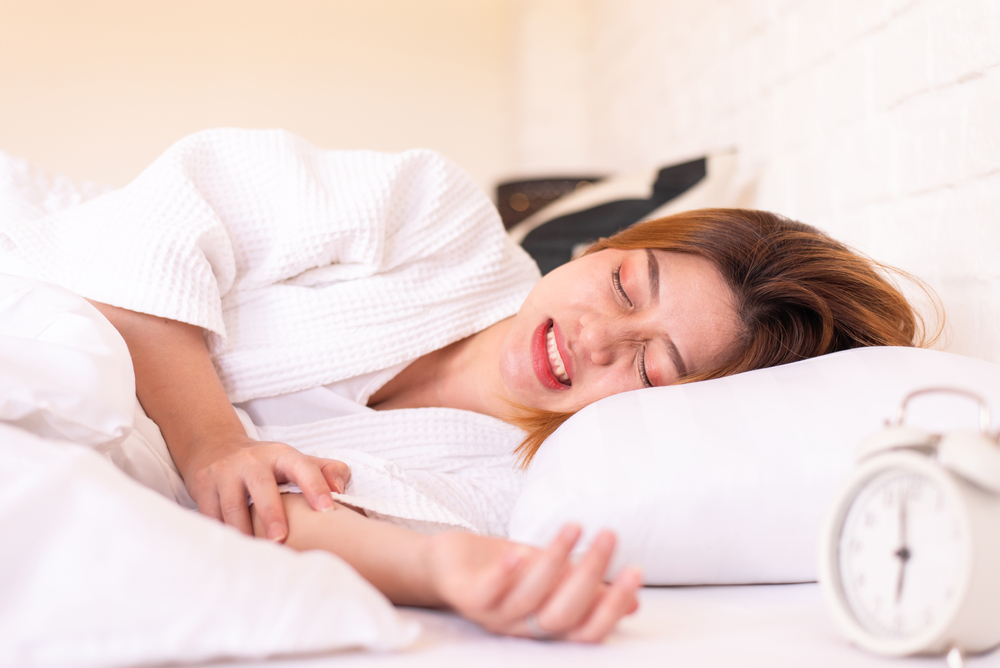Obstructive sleep apnea (OSA) is a common sleep disorder that can lead to serious health consequences when untreated. According to the American Academy of Sleep Medicine (AASM), an estimated 80% of people who have the disorder are undiagnosed and, as a result, not receiving needed treatment. Up to 15% of North American cisgender women are thought to have OSA.
Traditionally, OSA was thought to be overwhelmingly more common in males. But in recent years, research has found that more women have the disorder than experts previously believed. OSA remains under-recognized among women due to symptom differences, biased tests, and a lack of research with women participants, all of which make it less likely for doctors to refer women for OSA testing. But identifying and treating those who have OSA is important.

What Is Sleep Apnea?
Obstructive sleep apnea is a sleep disorder in which a person experiences recurring instances of slowed or stopped breathing during sleep. These pauses or moments of slowed-down breathing result from the throat partially or fully closing. The broadest definition of OSA is the occurrence of five or more such breathing events per each hour of sleep, on average.
Sleep Apnea Symptoms in Women
“Classic” symptoms of obstructive sleep apnea are the common symptoms that medical experts usually look for when considering if a person might have OSA. People of all genders can experience classic symptoms, which include:
- Loud snoring during sleep
- Gasping, snorting, or choking during sleep
- Visibly not breathing for periods of time during sleep
- Daytime tiredness
While many women experience classic OSA symptoms, women may, overall, experience fewer classic symptoms compared to men. Instead, women may be more likely to experience less common OSA symptoms, which include:
- Mood changes
- Depression
- Anxiety
- Fatigue
- Morning headaches
- Nightmares
- Trouble falling or staying asleep
- Waking up during the night
- Needing to urinate at night
- Leg cramps or restless legs at night
Symptoms like depression and anxiety show a less obvious link to sleep, which may be part of the reason why sleep apnea often goes undiagnosed in women.
Risk Factors for Sleep Apnea in Women
Although the exact cause of OSA is unknown, multiple factors can increase a woman's risk of developing obstructive sleep apnea.
Weight
A higher body weight and body mass index (BMI) are risk factors for OSA among people of all genders, likely because excess fat tissue can constrict the airway. A person's neck or waist circumference is thought to have even more of an effect on OSA symptoms than weight or BMI. Specifically, women with a neck circumference larger than 16 inches or a waist circumference greater than about 38 inches face a higher risk of OSA.
Pregnancy
Experts believe pregnancy is a risk factor for OSA, though how frequently OSA occurs among pregnant people hasn't been widely studied. Multiple physical changes that occur during pregnancy may make OSA more likely. These changes include a narrowed throat, narrowed nasal passages, and changes in hormones that affect breathing.
Experts recommend that pregnant people who have either high blood pressure or diabetes should be screened for OSA, since these are risk factors.
Age and Menopause
A person's risk of developing OSA increases as they age, then plateaus in their 60s or 70s. For females, this increased risk with age may partially stem from weight gain and other factors involved in the aging process.
Among women, the increased risk of developing OSA with age appears directly related to menopause, or the point in time at which a woman's menstrual cycle ends. Some research has found that up to 67% of postmenopausal women develop OSA. Hormonal changes may be the cause, but whether hormone treatment can help with OSA is unclear.

Polycystic Ovary Syndrome (PCOS)
Adult women with polycystic ovary syndrome (PCOS) are almost ten times more likely to have OSA. PCOS is a common syndrome that often presents with increased androgen hormones, decreased fertility, and ovarian cysts. PCOS may increase OSA risk through increased obesity, increased androgen hormones, or insulin resistance.
How Sleep Apnea Is Different in Women
Research is beginning to show that many facets of obstructive sleep apnea present differently in women.
- Symptom presentation: Women may experience fewer classic symptoms of OSA, like snoring or gasping during sleep. Instead, women may display more of the OSA symptoms that are considered less common, like depression, anxiety, and headaches.
- Severity and impact: Research shows that women with OSA tend to have fewer pauses in breathing during sleep, and the pauses they experience are shorter. Women may also be more likely to experience periods of shallow breathing instead of outright lapses in breathing. However, women experience greater symptoms in response to fewer pauses in breathing compared to men, so “mild” OSA in a woman may feel similar to “severe” OSA in a man.
- Position differences: While men may be more likely to experience pauses in breathing while sleeping on their backs, this may not be as significant for women.
- Sleep stage differences: Women with OSA tend to experience a greater percentage of their breathing events during rapid-eye movement (REM) sleep stages and fewer during non-REM stages. Some experts have argued that this difference could explain why less severe OSA has a greater effect on women, as REM sleep may be more sensitive to disruptions and have a greater impact on heart health.
- Hormone-related fluctuations: OSA symptoms may fluctuate along with hormonal fluctuations a woman experiences throughout the menstrual cycle, during pregnancy, while taking oral contraceptives, or in perimenopause.
Why Women Are Underdiagnosed With Sleep Apnea
Research suggests that women are underdiagnosed with obstructive sleep apnea and, as a result, many remain untreated. Women are likely underdiagnosed with obstructive sleep apnea for multiple reasons.
Lack of OSA Research on Women
Most OSA research has been conducted with middle-aged men as participants, because experts traditionally believed OSA was a men's disorder. For this reason, it's unknown how well most OSA research applies to women. Many experts are speaking up about the need for more OSA research conducted on women moving forward.
Bias in OAS Screenings
Many OSA screenings are based on the classic OSA symptoms generally seen in men. Because women may present with different symptoms, these screenings may not properly identify those who should be referred for a sleep study.
For example, a popular screening called the STOP-BANG is biased to find OSA among men rather than women. Similarly, while another test called the Epworth Sleepiness Scale is often used to identify the excessive daytime tiredness associated with OSA, there is insufficient research to confirm whether this is valid for diagnosing OSA in women.
Diagnostic Criteria Based on Men
Even when women are referred for a sleep study, the criteria used to identify OSA may leave them undiagnosed.
OSA is diagnosed based on how many lapses in breathing a person has per average hour of sleep. Women experience a spike in breathing events during REM sleep and fewer events during non-REM, so averaging numbers across all sleep stages can obscure their disordered sleep.
Women may also experience slightly smaller drops in blood oxygen levels, so depending on the criteria used during a sleep test, these breathing events might not count toward their total.
Lack of Awareness Among Doctors
OSA has been traditionally viewed as a male disorder, so doctors might not think to look for the disorder among female patients. Also, doctors who have only been trained to look for the classic symptoms may under-diagnose women, since up to 40% of women do not have those symptoms.
Lack of Awareness Among Women
Women may not recognize that their symptoms could stem from a sleep disorder, so they may not mention their symptoms to a doctor. If they sleep alone or have a bed partner who hasn't mentioned their snoring or doesn't come with them to doctors' appointments, they might not realize they snore. Even when they are aware they snore, women may be reluctant to admit it out of embarrassment. Without awareness of their symptoms, women may go undiagnosed.
Potential Misdiagnoses
Since many women have more of the OSA symptoms that are considered less common, their doctors may not suspect OSA and instead diagnose them with other disorders. For example, if a woman with undiagnosed OSA has depression or anxiety symptoms, she may be diagnosed with depression or anxiety and not sent for a sleep study.
Because OSA prevalence greatly increases among women around menopause, OSA symptoms appearing in that time of life may be misinterpreted as menopause symptoms.
What Happens When Women Don't Treat Sleep Apnea
OSA has been linked to and may worsen a variety of different medical disorders, including heart disease, high cholesterol, type 2 diabetes, asthma, hypothyroidism, acid reflux, obesity, cognitive impairment, dementia, high blood pressure, and depression. Treatment of OSA in women hasn't been widely studied, but it has been found to reduce heart-related risks.
In pregnancy, women with untreated OSA face a higher risk of complications and adverse outcomes, such as preeclampsia, eclampsia, heart problems, gestational diabetes, gestational high blood pressure, premature birth, needing a cesarean section, and pregnancy-related death.
On a day-to-day basis, sleepiness from OSA can affect quality of life and lead to a higher risk of accidents such as car crashes.
Diagnosing and Treating Sleep Apnea
If you suspect you may have obstructive sleep apnea, talk to your doctor. The earlier OSA can be diagnosed and treated, the better. Be sure to tell your doctor all of your symptoms, not just the ones they have asked you about. Consider bringing a bed partner to your appointment, if you have one, or asking others you've shared a room with before if you snore. As part of your diagnosis, you may undergo an overnight sleep study, also known as polysomnography, or take an at-home sleep apnea test.
The gold standard treatment for OSA is positive airway pressure (PAP) therapy. With PAP therapy, a stream of air keeps the airway open during sleep. Women don't usually need as much air pressure from PAP therapy as men. While PAP therapy is largely considered the best OSA treatment option, its effectiveness in women in particular hasn't been widely studied.
Other treatments besides PAP therapy are available. For example, people who are overweight or obese are often advised to lose weight. That said, this advice may be more applicable to men, who tend to carry body fat differently.
Surgeries and oral appliances are OSA treatments that may be useful for people whose airways are being blocked by their jaw placement or enlarged tissues in the tongue or airway. Often, PAP therapy is tried first, and surgery or oral appliances are considered only if PAP therapy doesn't work. Preliminary research suggests oral appliances may work well for women. Medications aren't generally recommended to treat OSA.
Sleep Apnea and Transgender Women
There is very little research on obstructive sleep apnea in transgender women or men assigned female at birth. One case study found that a person assigned male at birth had severe OSA resolve after beginning female sex hormones, while two men assigned female at birth developed OSA after starting gender-reaffirming hormone treatment. That said, one case study isn't enough to determine how gender-affirming hormone therapy will impact a person's OSA risk, so more research is needed.





